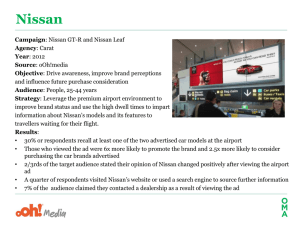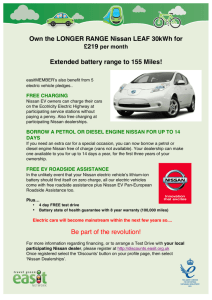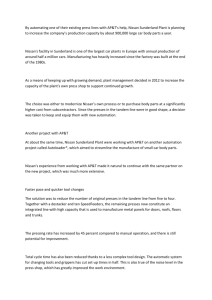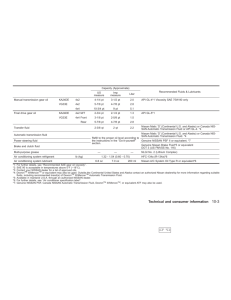LB.Situational.Analysis
advertisement
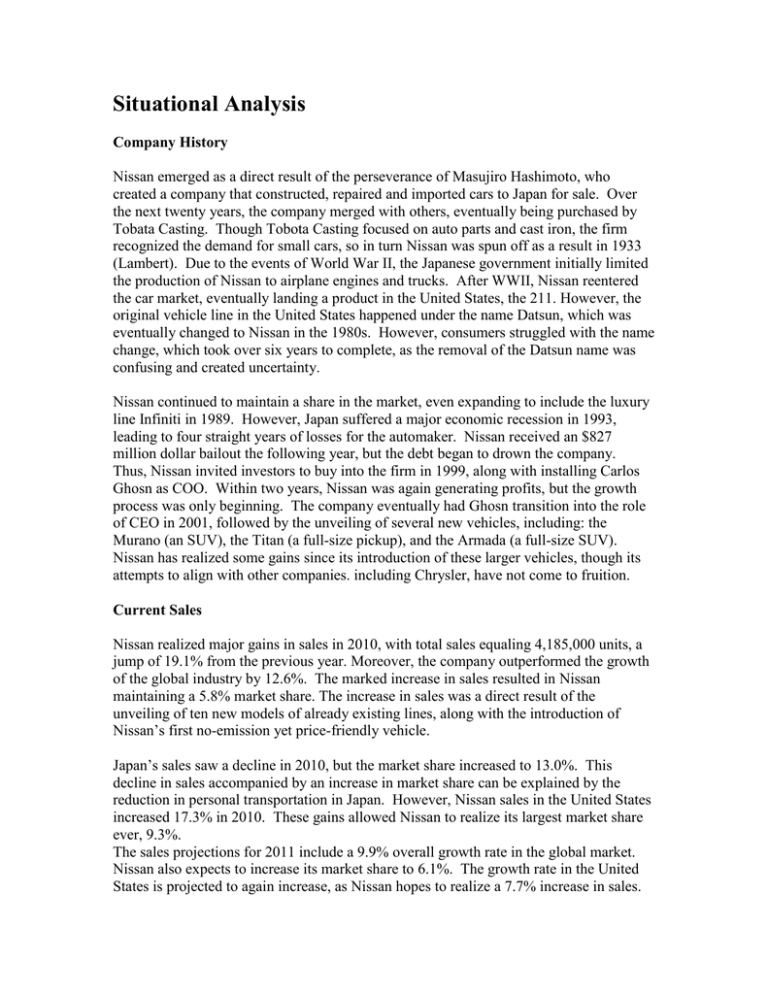
Situational Analysis Company History Nissan emerged as a direct result of the perseverance of Masujiro Hashimoto, who created a company that constructed, repaired and imported cars to Japan for sale. Over the next twenty years, the company merged with others, eventually being purchased by Tobata Casting. Though Tobota Casting focused on auto parts and cast iron, the firm recognized the demand for small cars, so in turn Nissan was spun off as a result in 1933 (Lambert). Due to the events of World War II, the Japanese government initially limited the production of Nissan to airplane engines and trucks. After WWII, Nissan reentered the car market, eventually landing a product in the United States, the 211. However, the original vehicle line in the United States happened under the name Datsun, which was eventually changed to Nissan in the 1980s. However, consumers struggled with the name change, which took over six years to complete, as the removal of the Datsun name was confusing and created uncertainty. Nissan continued to maintain a share in the market, even expanding to include the luxury line Infiniti in 1989. However, Japan suffered a major economic recession in 1993, leading to four straight years of losses for the automaker. Nissan received an $827 million dollar bailout the following year, but the debt began to drown the company. Thus, Nissan invited investors to buy into the firm in 1999, along with installing Carlos Ghosn as COO. Within two years, Nissan was again generating profits, but the growth process was only beginning. The company eventually had Ghosn transition into the role of CEO in 2001, followed by the unveiling of several new vehicles, including: the Murano (an SUV), the Titan (a full-size pickup), and the Armada (a full-size SUV). Nissan has realized some gains since its introduction of these larger vehicles, though its attempts to align with other companies. including Chrysler, have not come to fruition. Current Sales Nissan realized major gains in sales in 2010, with total sales equaling 4,185,000 units, a jump of 19.1% from the previous year. Moreover, the company outperformed the growth of the global industry by 12.6%. The marked increase in sales resulted in Nissan maintaining a 5.8% market share. The increase in sales was a direct result of the unveiling of ten new models of already existing lines, along with the introduction of Nissan’s first no-emission yet price-friendly vehicle. Japan’s sales saw a decline in 2010, but the market share increased to 13.0%. This decline in sales accompanied by an increase in market share can be explained by the reduction in personal transportation in Japan. However, Nissan sales in the United States increased 17.3% in 2010. These gains allowed Nissan to realize its largest market share ever, 9.3%. The sales projections for 2011 include a 9.9% overall growth rate in the global market. Nissan also expects to increase its market share to 6.1%. The growth rate in the United States is projected to again increase, as Nissan hopes to realize a 7.7% increase in sales. The projected increase in sales can be attributed to the release of new innovations and technology including Back-up Collision Intervention and Around View Monitor. Lambert, Sylvia. "Nissan Motor Co., Ltd." Hoover's. Dun & Bradstreet, 2011. Web. 18 Oct. 2011. <http://subscriber.hoovers.com.ezproxy.tcu.edu/H/company360/ history.html?companyId=41879000000000>. http://www.nissanglobal.com/EN/DOCUMENT/PDF/AR/2011/AR2011_E_p18_Sales_P erformance.pdf
